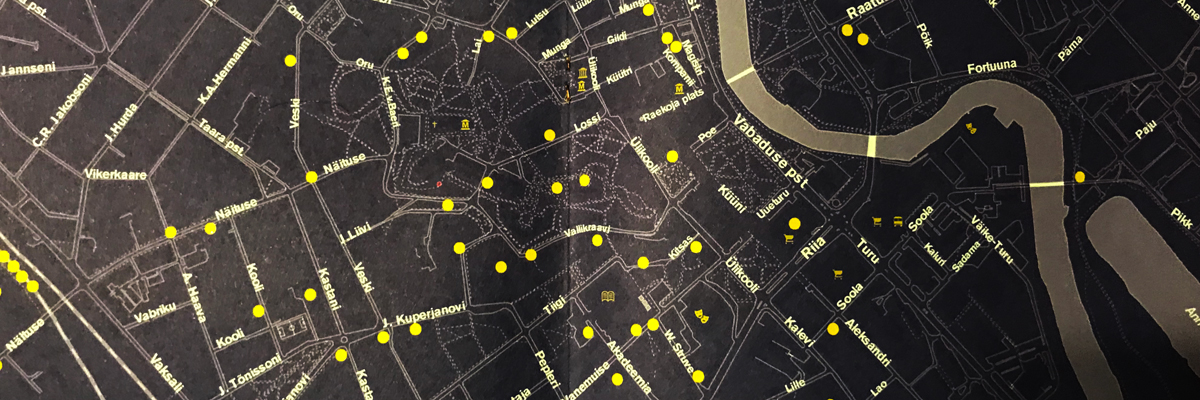Almost a decade after the Stencibility festival began in Tartu, Estonia, and just in time for the launch of their 2019 program, the first edition zine has been released. Full of images, essays, interviews, and personal experiences of art in the streets in this eastern European city of 93,000, the opening foreword is by co-founder of the festival, who goes by a one name moniker of Sirla, and who serves as editor of the issue along with longtime organizer Kadri Lind.
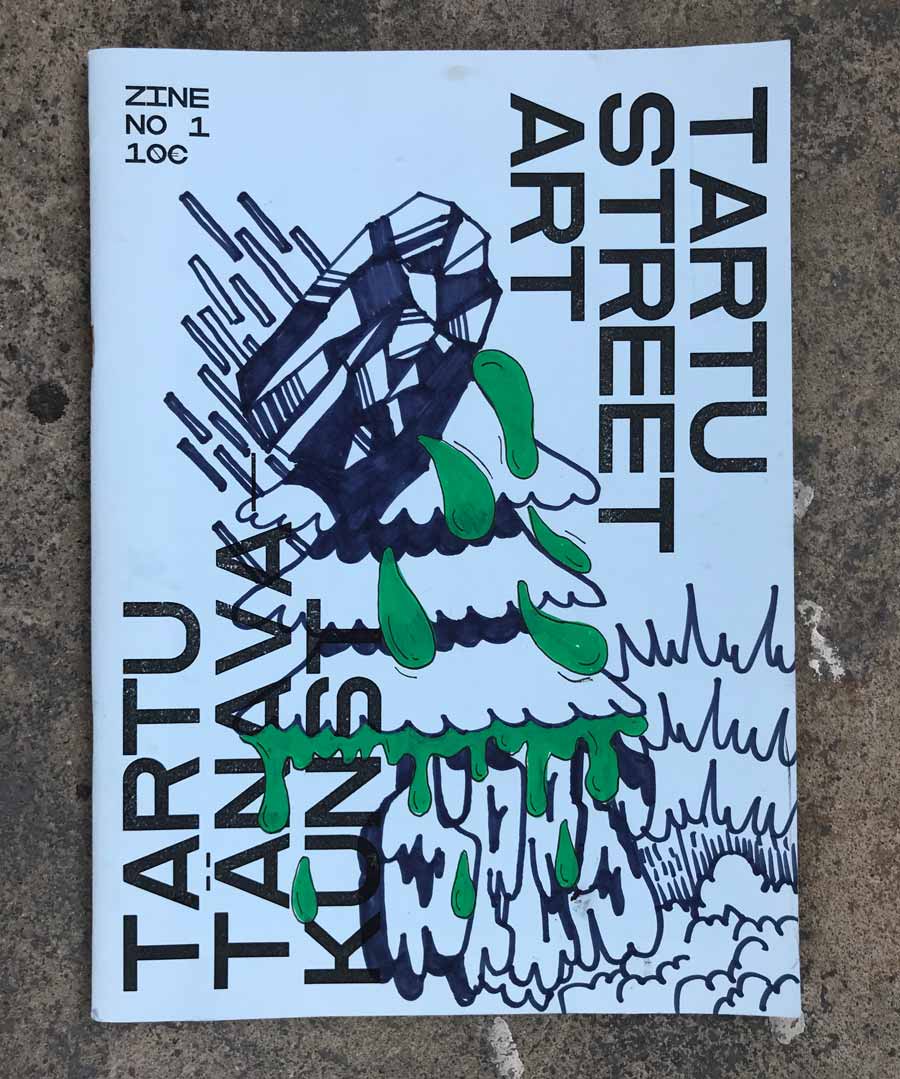
Championing a pretty straight-forward philosophy toward individual artistic participation in the streets, Stencibility has stayed clear of common commercial pitfalls familiar to festival organizers while espousing a refreshing philosophy of inclusion and participation.
Yes, there are film programs and artists talks, and even tours and “tabling” with educational information, but there is not a discernable “positioning” for sales or branding of those events, keeping them within the realm of social study, urban studies, expression, and possibly self-realization. It helps that Tartu as a city supports the festival, owing as much to its history as a university town as its desire to retain or attract many of the younger population who flooded out of the city in the post-Soviet era.
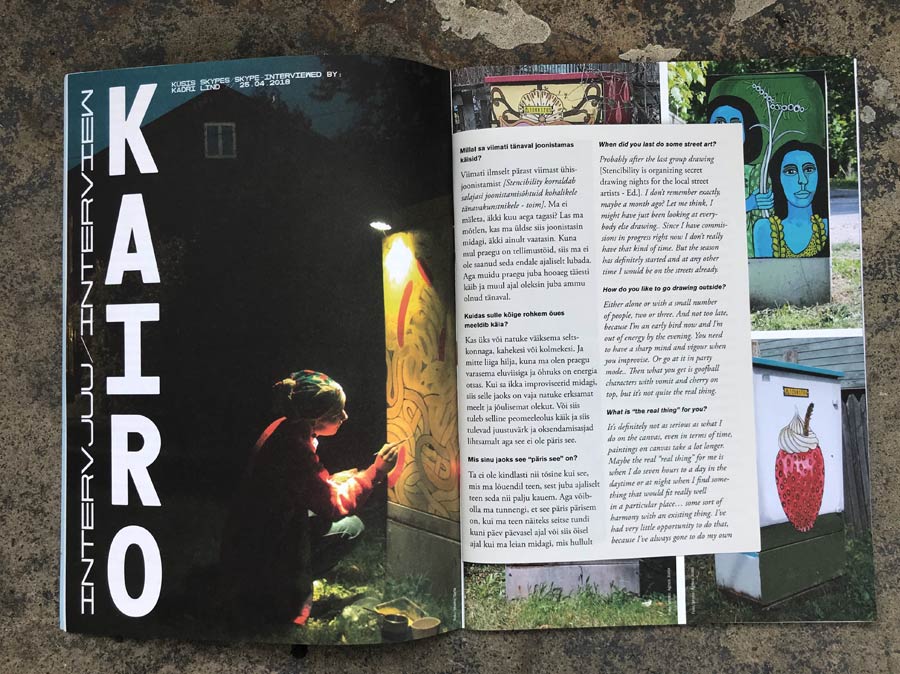
Aside from Sirla’s reasoned, seasoned and insightful observations and distinctions that help define the Street Art scene locally and trends in international discussions, we’re also excited and intrigued by the ground rules of the Stencilbility manifesto that are printed just inside the zine. It clearly places some civic responsibility squarely on the shoulders of the
artistic intervener:
- Public space belongs to everyone who uses it.
- It is everyone’s duty to take care of
it, - The purpose of street art is to enrich, not deface, public space.
- All additions are welcome. If you don’t like it, improve it.
- To guarantee ultimate creative freedom, act according to your conscience, not laws and regulations.
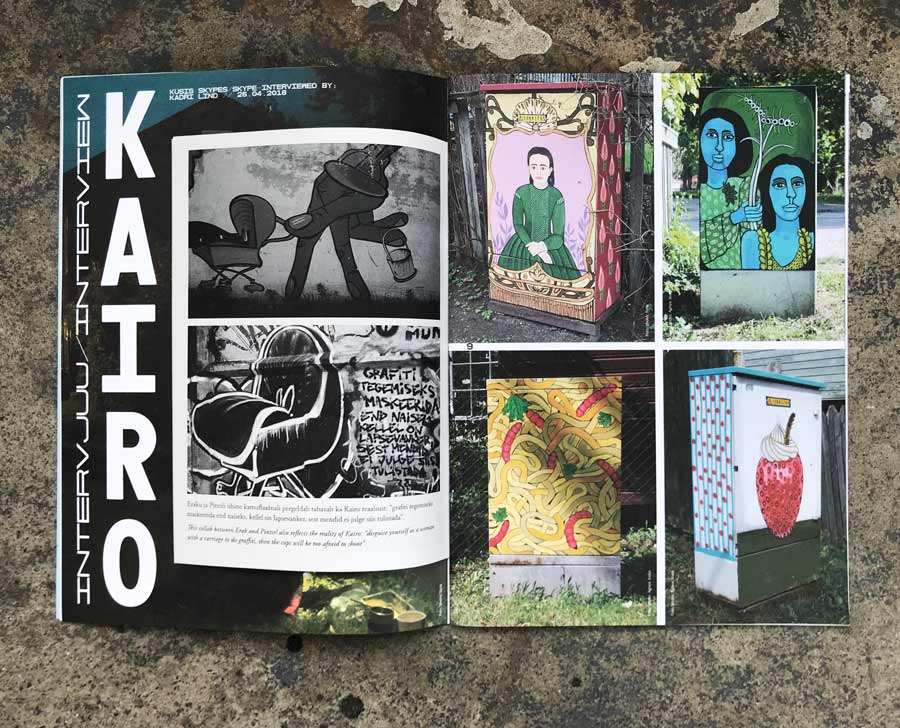
Indicative of the open-minded atmosphere that brings illegal art-making in the streets is one of the interviews in the zine with artist Kairo. She spends hours painting electrical boxes with various decorative motifs and styles and has coined her own term to describe her technique as “
So unconcerned is Kairo about transgressing public/private space with her art practice that half of her street gear
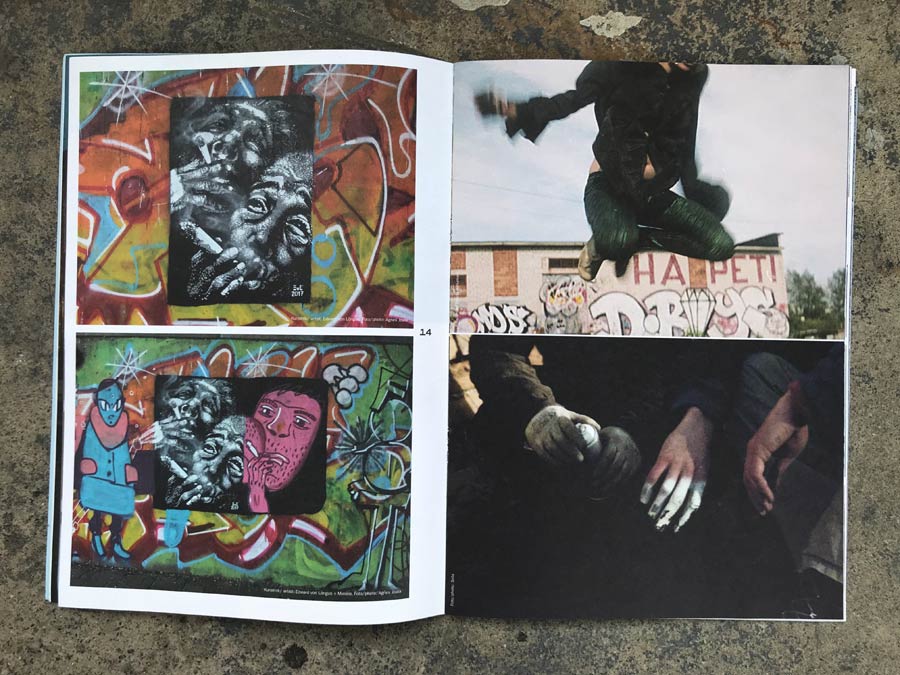
“Actually, there haven’t been as many incidents as maybe I’d like,” she says. “That might just exemplify the special friendly atmosphere of Tartu. The police have never talked to me, only driven by. They have startled
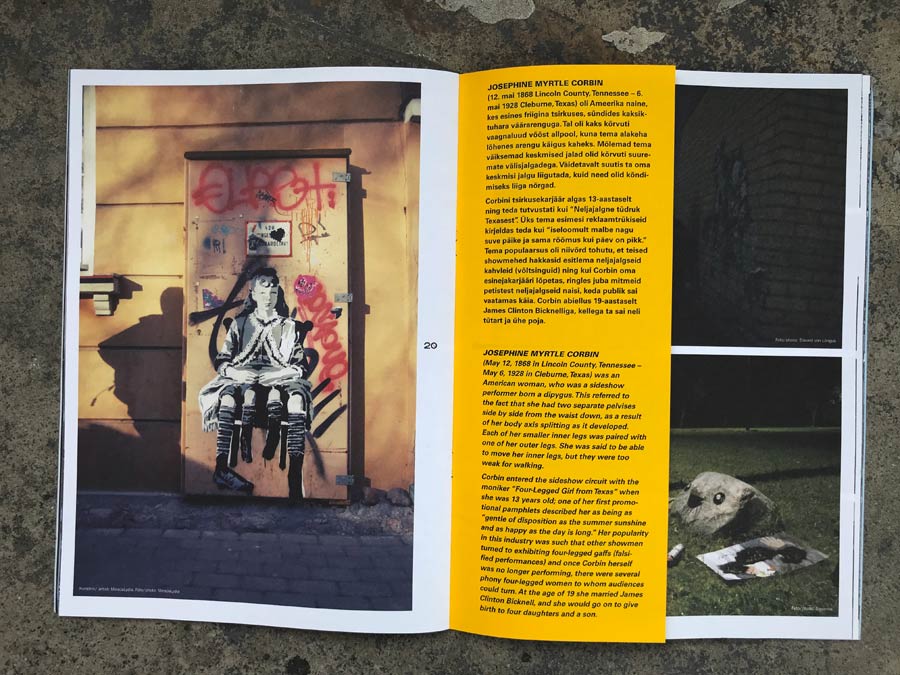
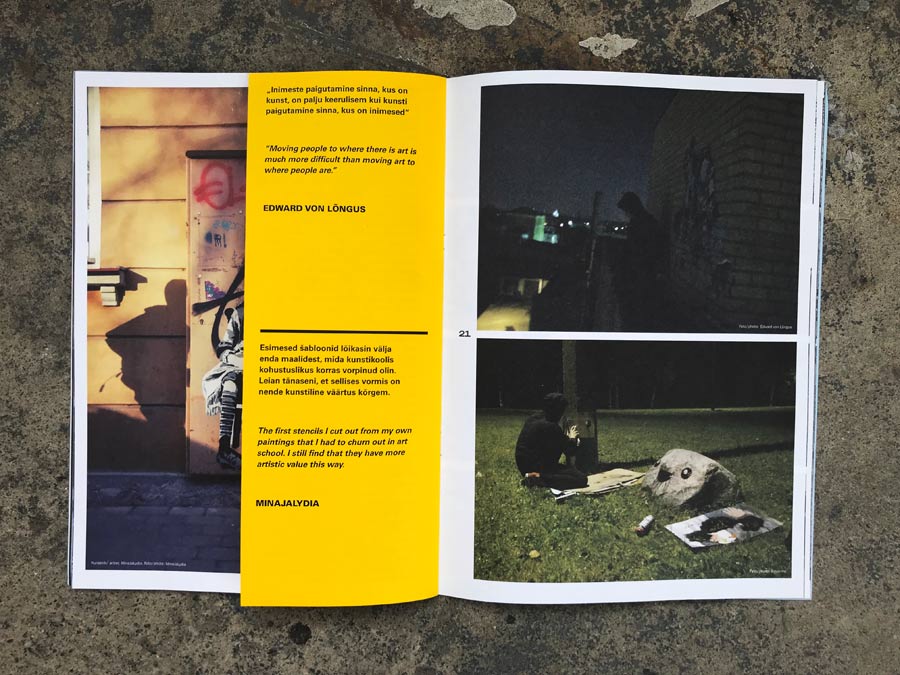
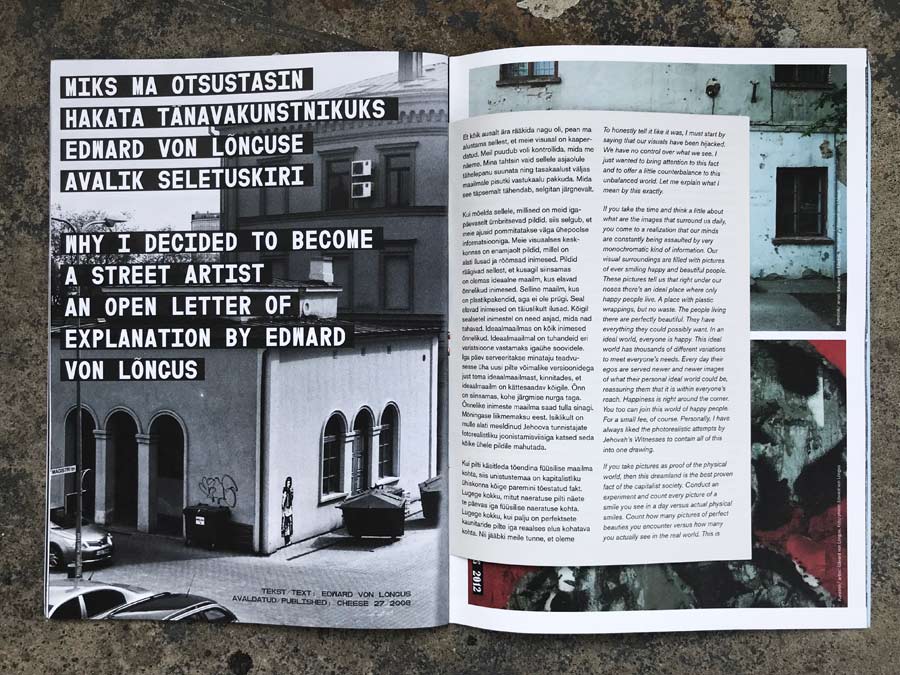

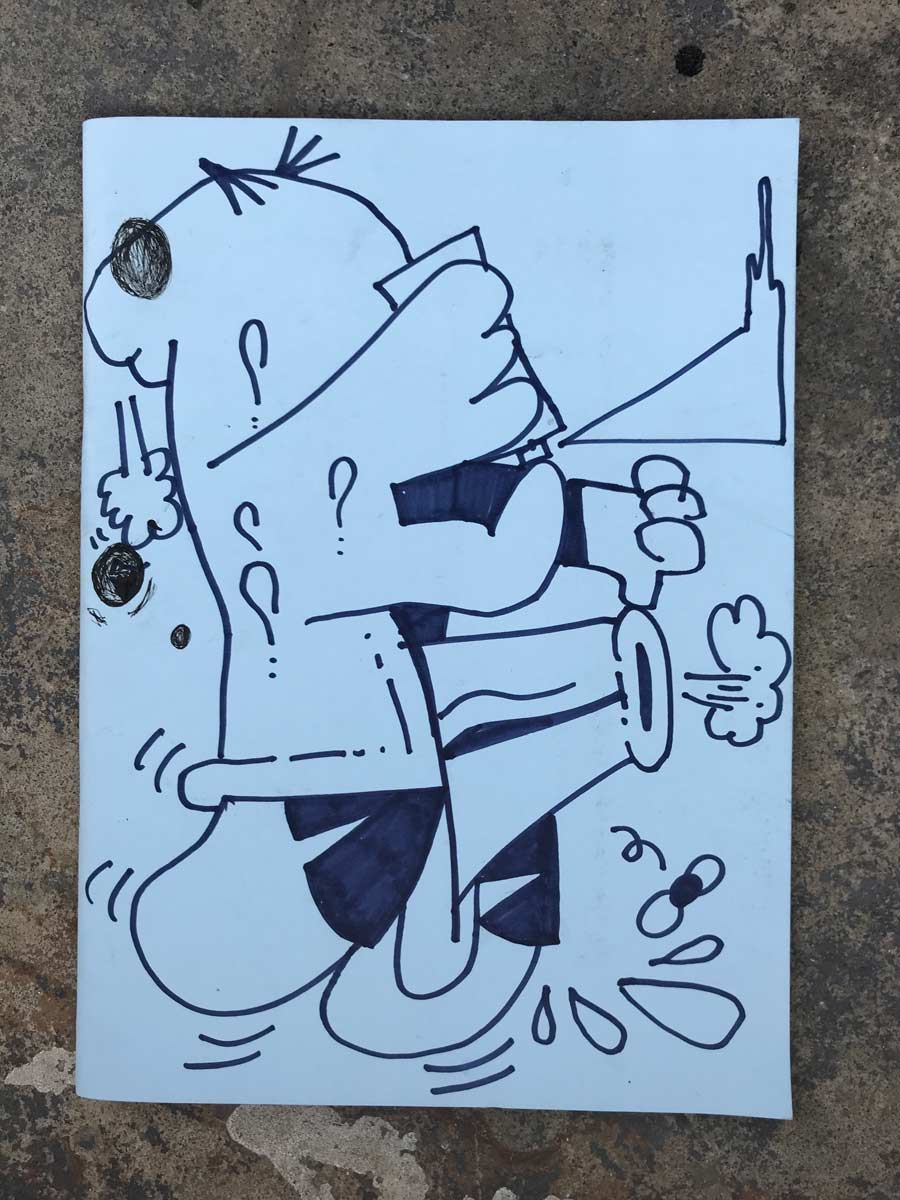
Tartu Street Art Zine No 1
Editors: Sirla, Kadri Lind
Tartu 2018
Other Articles You May Like from BSA:
Urban environments continue to evolve and adapt to the exigencies of population growth caused in part by the exodus of people from rural areas to metropolia around the world. Structural features of i...
Dazed and confused, how much of our population is apparently anesthetized; directed through daily decisions by a delicious blend of disinformation and propaganda? Everyone will insist they are not, b...
Dutch multidisciplinary street artist Eelco van den Berg (‘Virus) was in back in Brooklyn last week for a minute putting up a new wall with the Bushwick Collective - cat, fox, and bid in his distinc...
Here's something to look forward to! A good solid regional actual mural festival celebrating its fourth edition, and one that we are proud to support. For those not able to travel, BSA will bring you...
Welcome to BSA Images of the Week! Happy Fathers Day to all the fathers and those filling that role for families. We know it's not easy work. We're thankful to all the guys who are there to raise...
 BROOKLYN STREET ART LOVES YOU MORE EVERY DAY
BROOKLYN STREET ART LOVES YOU MORE EVERY DAY